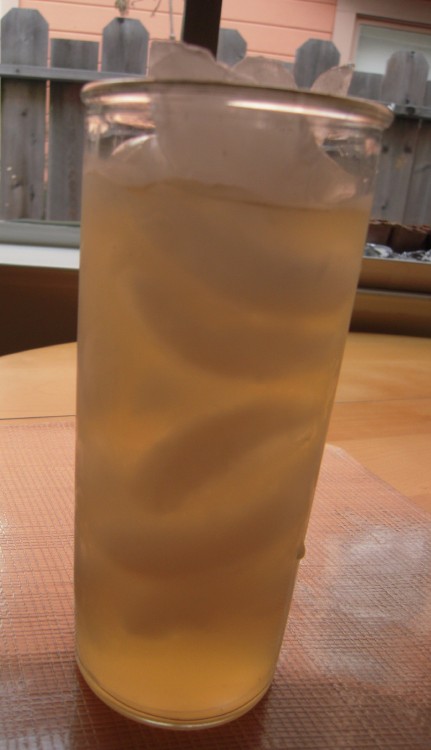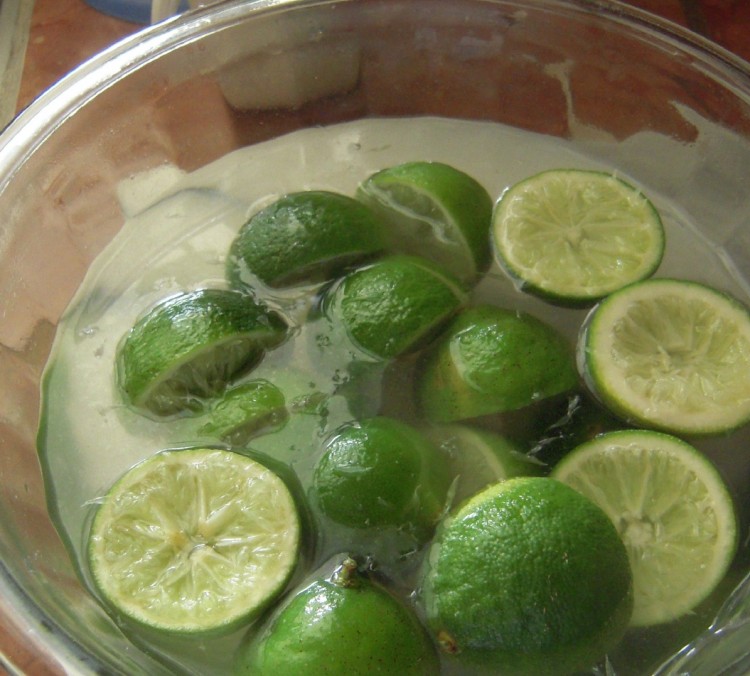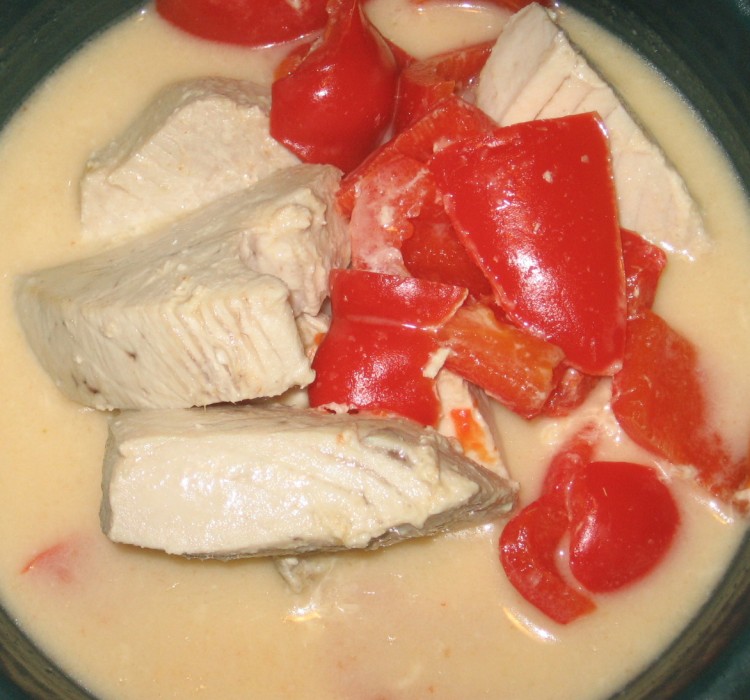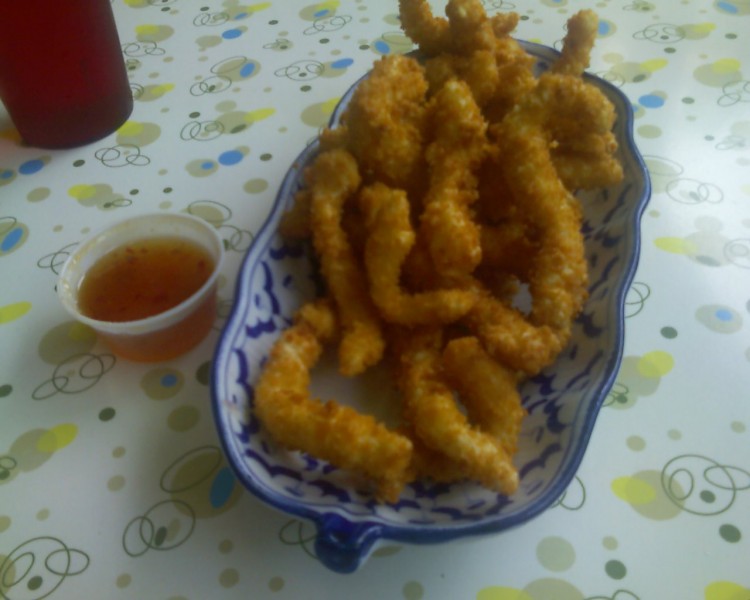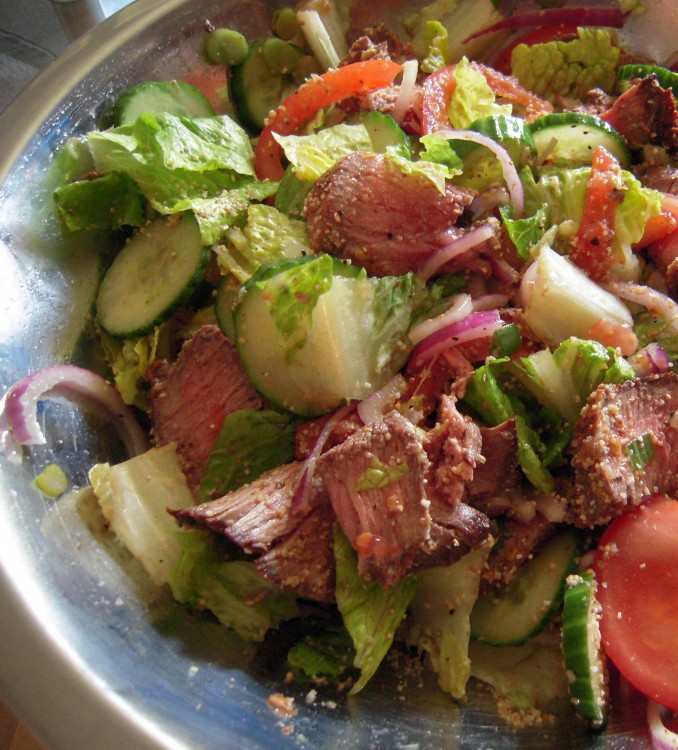
Thai steak salad – a great way to use leftover steak!
I had a large piece of leftover tri-tip (end of the bottom sirloin) on my hands the other day and wanted to use it as-is, since it was nice and rare. One of the best ways to use leftover steak is in a salad with Thai flavors.
The inspiration for this dish is nam tok, the Issan/Laotian* grilled beef salad containing herbs, fresh veggies, rice powder and a fish sauce/lime juice dressing. Anyone who knows me knows I love the food of Issan, the Northeastern region of Thailand, which is famous for its hom mali (Jasmine) rice production and, sadly, the poverty of its farmers. Many of these farmers have been spending time in Bangkok in recent years selling street food, which has made Issan goodies quite popular there, particularly gai yang, a pungent version of grilled chicken. I’ll post more about Issan in the future, but the one thing you should know about its food is how clean tasting and bright it is, being highly dependent upon fresh produce. *Note that Issan and Laos share a border, and that the people of Issan are of Laotian heritage, because there wasn’t always a border between them.
The one thing that may throw you here is the rice powder. Rice powder is toasted rice that has been ground to something between coarse and fine, and it gives Issan warm salads a nice crunch. It is best to make it yourself, and I’ll tell you how to do that. In a pinch, though, you can use rice cereal (Cream of Rice). Just toast it slowly and carefully in a pan over a flame and then allow it to cool. This will not be half as good as real rice powder, but sometimes you have to make do. Make sure that whatever you use is not so hard that people will damage their teeth. Check your work – make sure it’s toasted enough.
If you want to make this a meal, serve it with sticky (sweet) rice. This would be authentically Issan/Lao.
Renate’s Thai-stye Steak Salad
Serves 4 or 5
3/4 – 1 pound leftover steak, sliced in thin strips (nothing with destinctive seasoning)
1/4 cup fish sauce
1/4 cup fresh lime juice
1 tablespoon + 1 teaspoon sugar
1 red chili pepper, seeded & deveined, finely minced
2 green onions, sliced into small rounds
1 English cucumber (if a huge one, use half), sliced
1/4 cup Thai basil, thick chiffonade (roll and cut)
1/4 cup cilantro, rough chop (don’t make tiny pieces)
1/4 cup mint, thick chiffonade
1 tomato, cut into large cubes
1 small red onion, sliced medium
6 cups lettuce
2 tablespoons rice powder (recipe below)
1) Combine the fish sauce, lime juice, sugar and chili pepper well and set aside
2) Place the sliced steak into a bowl and toss with a couple of tablespoon of the dressing; set aside for 10 minutes
3) In a large bowl, toss everything (including the marinated beef and dressing) except the rice powder
4) Check seasoning. If too mild for your liking, mix up a little more dressing. If not sour enough, a little lime juice. And so on
5) Toss in the rice powder at the last minute and serve
Rice Powder
1/4 cup sweet rice (it’s not really sweet )
Heavy saute pan
Mortar & pestle or clean coffee grinder* or stand blender or bullet blender (blenders have to be very dry!)
1) Toast rice over low-ish flame until golden brown. Keep it moving. Don’t burn it.
2) Remove rice to a small bowl and allow to cool completely
3) Grind until you have a coarse powder
4) Store what you do not use in an airtight container, but don’t keep it more than a month or so
*If you use a coffee grinder that you use for spices, make sure it is absolutely clean. You can grind a batch of rice to clean it completely. Don’t use a coffee grinder that you also use for coffee.
